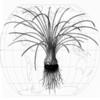| Publication Type: | Journal Article |
| Year of Publication: | 2013 |
| Authors: | I. I. Ozyigit, Dogan, I., Eskin, B., Keskin, M., Demir, G., Yalcin, I. E. |
| Journal: | Pakistan Journal of Botany |
| Volume: | 45 |
| Issue: | SPL.ISS |
| Pagination: | 515 - 519 |
| Date Published: | 2013/// |
| Abstract: | Isoetes genus is commonly known as the "quillworts" and considered to be "fern allies". There are about 200-250 species, with a cosmopolitan distribution but often scarce to rare. Isoetes genus members often grow in extremely sensitive aquatic environments such as temporary ponds, streams and lakes. They are therefore good indicators of environmental quality. Isoetes anatolica Prada & Rolleri is an endemic plant grows on calcareous sediment/soil on the edges of seasonal ponds located in a mountainous area near the southern coast of the Black Sea at 1400 m above sea level at Bolu, Turkey. In this study, mineral element uptake statuses of I. anatolica populations were studied on the background of plant-sediment/soil-water interactions. The study materials were collected from the place where this narrow endemic species only lives in the world (Abant Region, Bolu/Turkey) by using standard methods and plant and sediment/soil mineral element measurements (Al, B, Ca, Cu, Fe, K, Mg, Mn, Na, Ni and Zn) were done. ICP-OES was employed for the measurements during the study. Interrelations between mineral element contents in the sediment/soil, water and plant were discussed. The data revealed that I. anatolica is capable of accumulating considerable amounts of certain mineral elements (B, Ca, Mn and Na). |
| URL: | http://www.scopus.com/inward/record.url?eid=2-s2.0-84873472883&partnerID=40&md5=f0b7e3ebc6bd41e008336dcca6a36ffe |
